Henkel's Sustainability Story: From Inspiration to Action


Henkel Researchers’ World introduces children to the concepts of sustainability, consumption, recycling, materials science and more.
As sustainability leaders, Henkel is focused on transformational impact for the good of generations. Throughout our long history, we’ve developed innovative products and manufacturing processes that conserve natural resources and reduce waste. And we’ve made a commitment to transparency along the way.
In fact, Henkel became one of the first companies in Germany to publish an environmental report back in 1992 (long before it was the norm). With the 2022 Henkel Sustainability Report hot off the presses, Henkel is showcasing its 2030+ Sustainability Ambition Framework, which spans three key dimensions: regenerative planet, thriving communities and trusted partner.
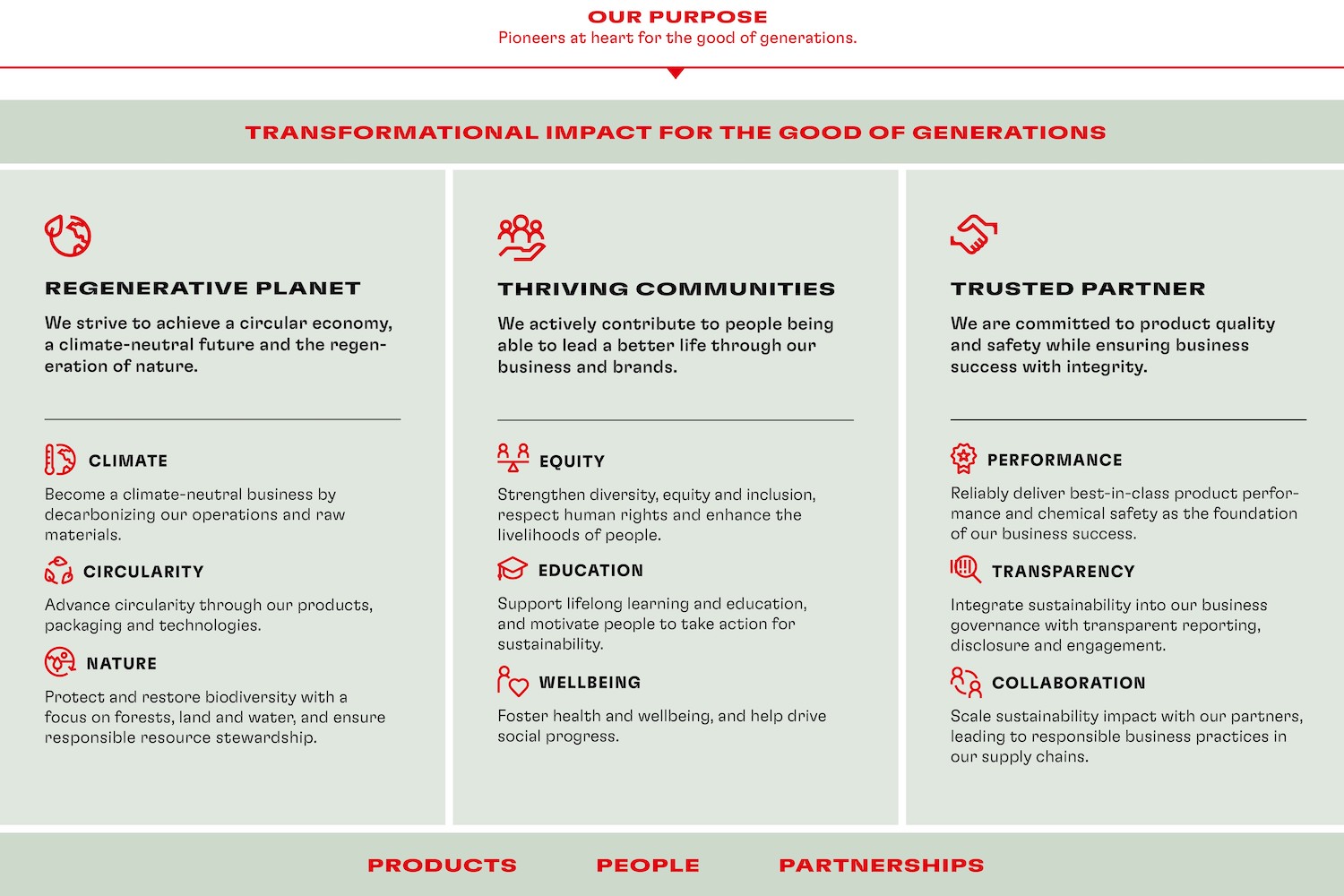
Below are a just few highlights from our 2022 Sustainability Report — stepping stones in our ongoing journey of sustainability, and how we are implementing action here in North America.
Regenerative planet
At Henkel, we continuously strive to transform our processes, products and use of raw materials to provide relief for our planet. Using more renewable ingredients in our products and packaging and leveraging energy efficiency technology at our manufacturing sites are two effective strategies. For example:
- Here in North America, a five-year collaboration with Shell will replace up to 200,000 tonnes of fossil-based feedstocks used in the manufacture of laundry surfactants (an ingredient that helps lather and lift dirt) with feedstocks that are based on renewable raw materials. The renewable-based surfactants will be used in many varieties of Persil, Purex and All brands.
- Across our North American manufacturing sites, Henkel is committed to sustainability progress. For example, in 2022, our adhesive plant in Cannon Falls, Minnesota, installed a new, energy-efficient cooling system that will save an estimated 18,000 cubic meters of water every year. In addition, an overhaul to a more efficient thermal oxidizing process resulted in annual natural gas savings of approximately 1,100 megawatt-hours of energy and a significant positive climate impact due to lower emissions.
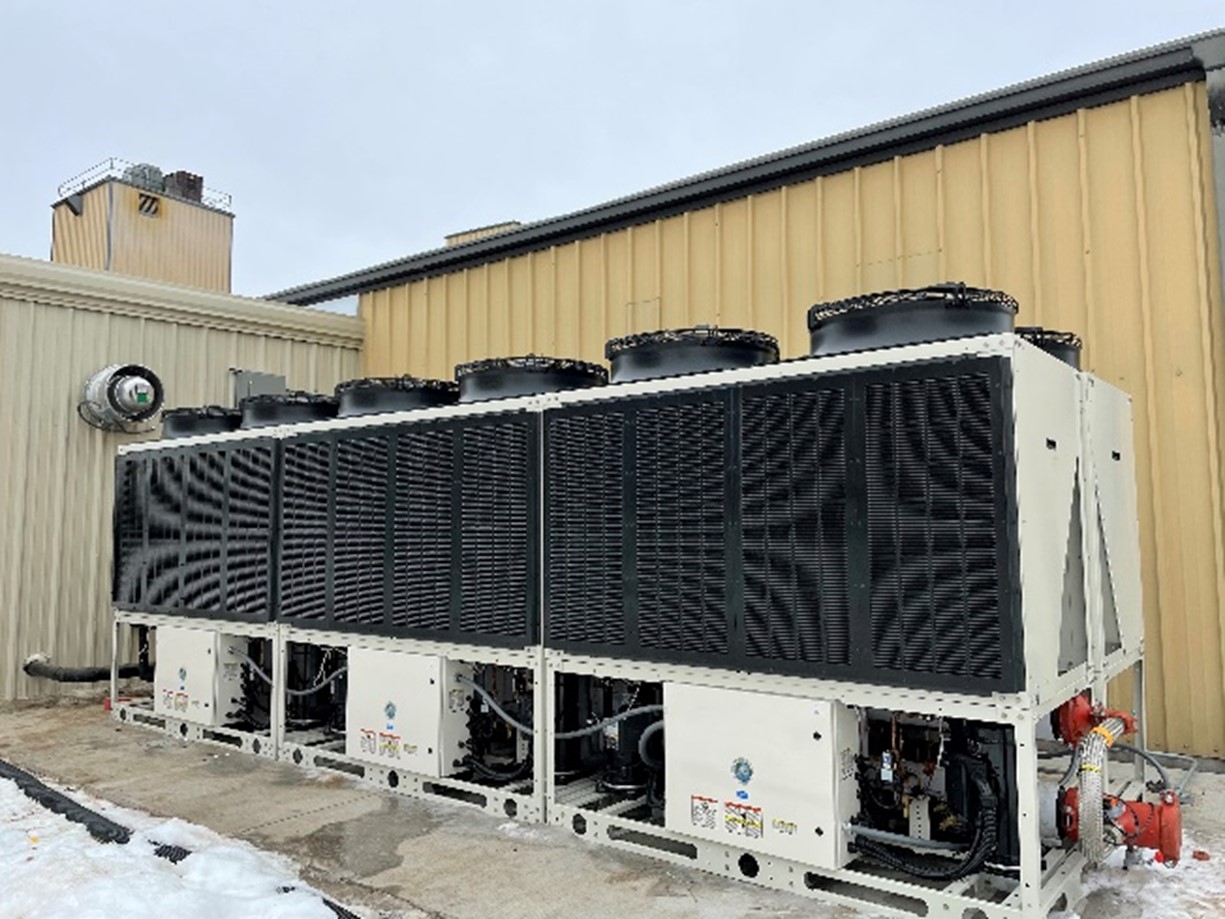
Thriving community
Through our business and brands, Henkel directly contributes to quality of life around the world. Beyond that, our desire to create sustainable change for customers and communities makes social engagement a driving force at Henkel. We support sustainable social projects around the world through volunteerism, social partnerships, emergency aid and brand engagement. Here are just a few examples:
- To cultivate curiosity and build science, technology, engineering and math (STEM) skills in young people, Henkel Researchers’ World (known as “Forscherwelt” in German) provides a research and development-based educational curriculum that has reached more than 81,000 children around the world since 2011.
- Here in North America, we launched the Henkel Researchers’ World program in Stamford, Connecticut, in 2021, in partnership with local nonprofit Mill River Park. The program has already reached more than 1,000 children. We look forward to expanding the program to reach more children, who may one day bring their STEM skills to the Henkel team.
- Another signature program, Make an Impact on Tomorrow (MIT), supports thriving communities through employee volunteerism. Celebrating its 25th year in 2023, the MIT program provides financial and other resources to support the causes closest to our employees’ hearts. Since the MIT initiative was launched in 1998, Henkel has provided $41 million to support over 17,000 charitable projects in more than 100 countries. In 2022, the work of Henkel volunteers in North America impacted the lives of more than 110,000 people.

Trusted partner
Today, Henkel strives to view every aspect of our business through a sustainability lens. And we report on sustainability progress openly to further build trust with stakeholders who share our concern for the environment. Here are two ways we are partnering to better the planet:
- Through a long-term partnership with Novozymes, we have developed new variants that increase the concentration of key enzyme outputs in detergents and cleaning agents by up to 40 percent. This enables us to eliminate about 1,000 metric tons of carbon emissions per year.
- Celebrating 10 years of partnership, Henkel and Solidaridad recently announced a grant from personal care brand Dial to help create 35,000 acres of farmland for certified sustainable palm oil production in Colombia and provide 250 farmers with training and access to additional financial support.

These are just a few of the ways our sustainability strategy is creating measurable, meaningful change. For more information about our efforts, please check out our 2022 Sustainability Report, or the sustainability page on the Henkel North America website.
While we are proud of our successes at Henkel, we know that we need to stay full speed ahead when it comes to sustainability. Henkel continues to bring that same pioneering spirit to create a more sustainable world for future generations. There’s no area where innovation is more important.
This article is sponsored by Henkel North America.
Images courtesy of Henkel
Investment in People and Ideas is Key to Climate Change Adaptation for Tourism-Dependent Countries


The lush Blue Mountain range in eastern Jamaica.
Jamaica is calling for investment in human capital and ideas to build capacity for climate change adaptation.
Despite contributing the least to global emissions, tourism-dependent regions like the Caribbean are hugely vulnerable to the impacts of climate change and disasters like pandemics. They struggle with economic resilience and social stability from an inability to recover well, and recover quickly, Edmund Bartlett, Jamaica’s minister of tourism, said at the 2023 Global Inclusive Growth Summit last week co-hosted by the Mastercard Center for Inclusive Growth and The Aspen Institute.
The struggle to recover is made clear in the numbers. Tourism accounted for just over 29 percent of Jamaica’s economy in 2019, according to the World Travel and Tourism Council. That dropped to just over 18 percent in 2021 as the industry worked to bounce back from the pandemic. The number of tourism-related jobs also dropped from almost 30 percent of the country’s total jobs in 2019 to around 23 percent in 2021.
The minister called for investment in local youth, innovation, knowledge, and skills to enable small, developing and underdeveloped countries to become resilient.
“Ideas, ideas, ideas,” he said. “We need investment in ideas. That’s a power— to create innovation, to be creative and to add value. And I want to leave you with that because that’s what we need — to add value.”
This is not the first time the Ministry of Tourism has emphasized investment in the country’s youth. In 2018 it helped launch a $100 million program that gave high-school students the opportunity to earn an entry-level qualification in tourism. And in 2022 the Tourism Innovation Incubator started a search for innovative tourism solutions that will give 25 winners access to training, mentoring and the chance to pitch their ideas to investors.
Prioritizing local innovation is already paying off in another tourism-dependent country: Costa Rica. Its success comes from an emphasis on ecotourism — travel directed toward supporting environmental conservation and the well-being of locals.
The tourism industry makes up 6 percent of the country’s economy and accounts for almost 10 percent of total jobs, according to the World Travel and Tourism Council. Both are down from 11 percent in 2019.
The emphasis on ecotourism balances the industry’s economic importance with climate change mitigation. Costa Rica alone makes up about 5 percent of the world’s biodiversity, and 25 percent of the country’s land is protected — including 29 national parks, 19 wildlife refuges and eight biological reserves, according to its Tourism Board.
The country contributes only 0.02 percent of global greenhouse gas emissions, yet it is on track to meet the emission reduction targets set in the Paris Agreement to limit global warming to 1.5 degrees Celsius, according to the United Nations Development Program.
One growing ecotourism project is El Camino de Costa Rica, a hiking trail that crosses the country from the Atlantic Ocean to the Pacific Ocean, passing through rural villages along the way. It harnesses the power of the tourism industry to support the sustainable economic development of inland communities and small businesses instead of only towns on the coasts.
The trail is also an opportunity to promote environmental education and biodiversity protection. Mar a Mar, the nonprofit in charge of El Camino, built a center for communities to connect near Barbilla National Park and a hiker’s camp owned and operated by a local community. It plans to build another center to host biodiversity and environmental education, training and research.
Local innovation can lead to economic growth that supports climate change mitigation and adaptation. When loss and damage funding is discussed again at the COP28 climate talks in December, it is crucial to heed the calls of those who are experiencing the worst effects of the climate crisis. They are already developing their own solutions. They know best what they need. And they, like Bartlett, know how best we can support them: “Invest in ideas, that’s the future of the world.”
Image credit: Yves Alarie/Unsplash
Engaging with SMEs Can Unlock Critical Scope 3 Emissions Data
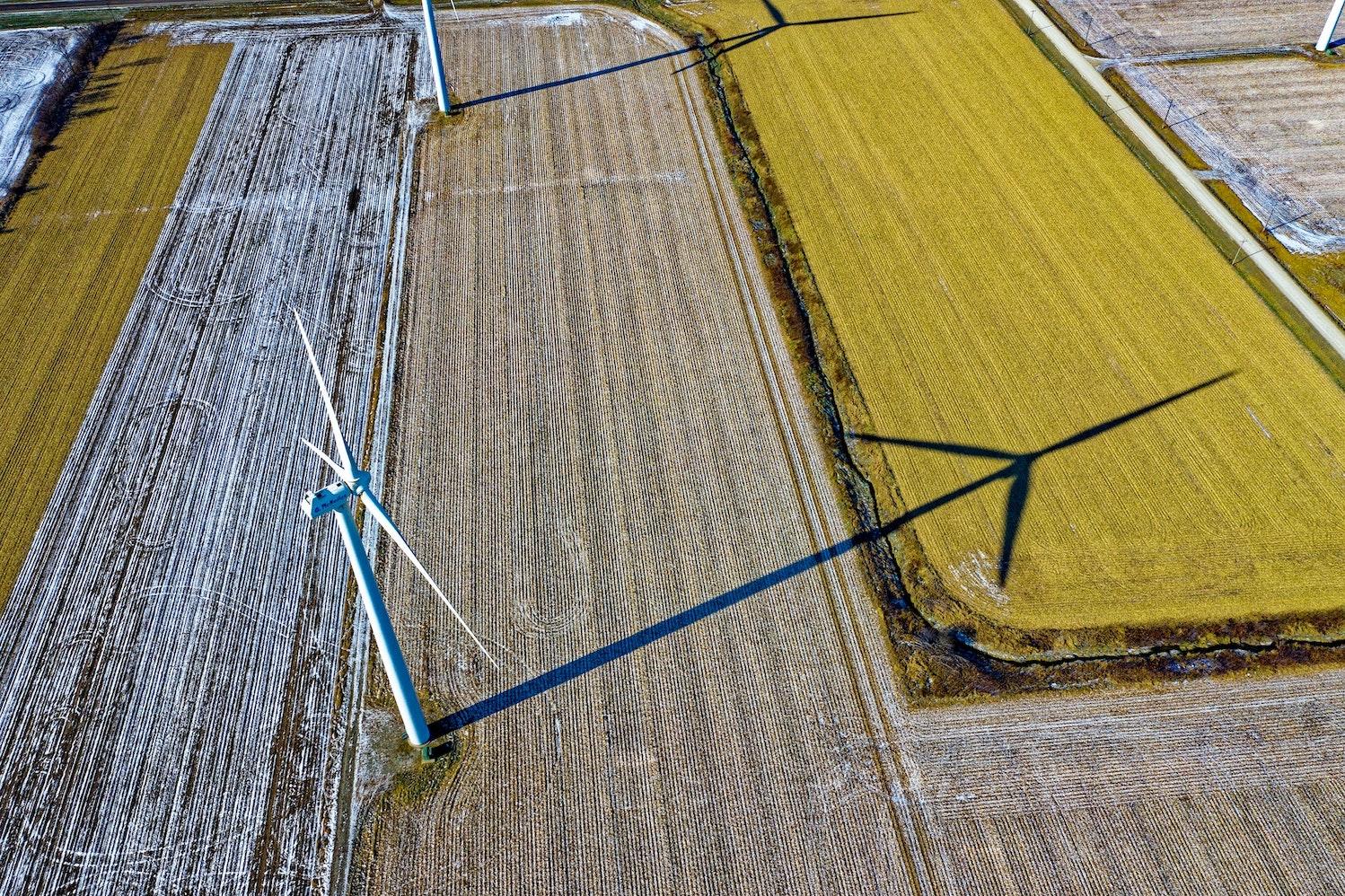
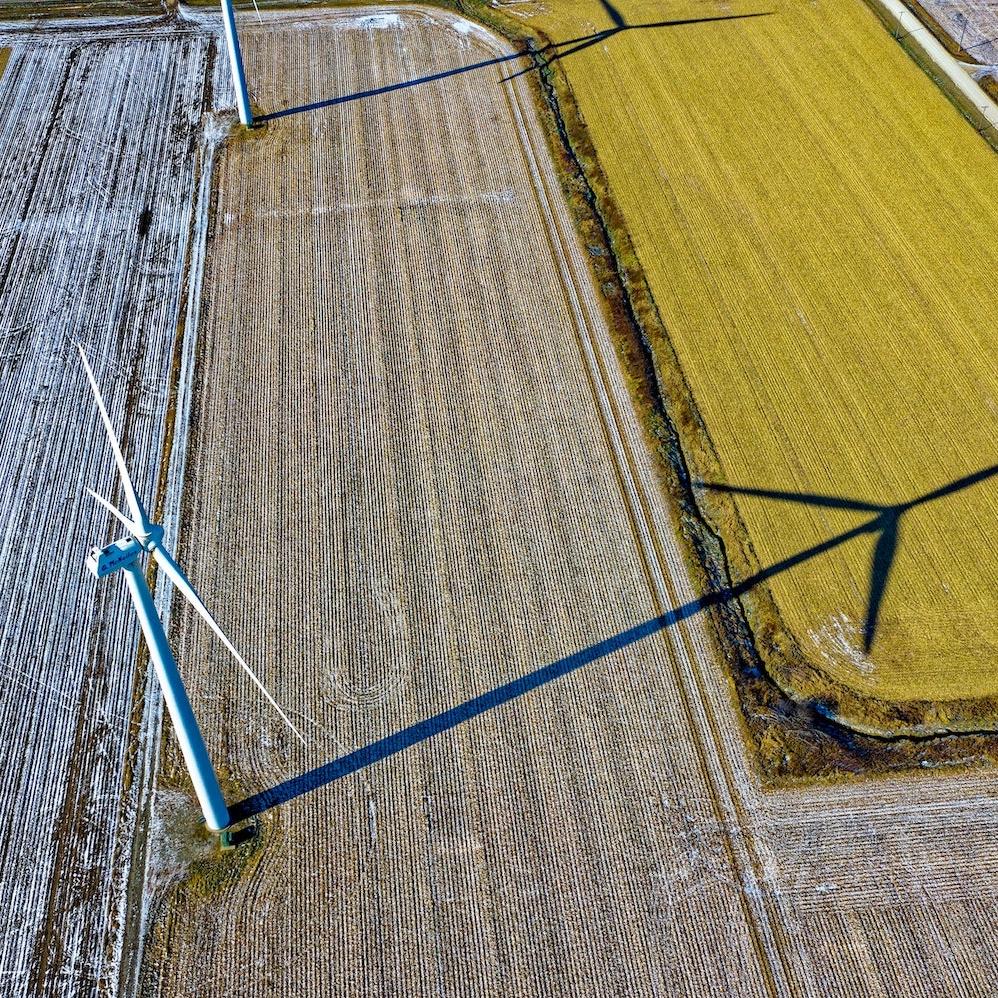
For large companies intent on gathering the full scope of greenhouse gas emissions data to meet their climate goals, working together with suppliers is the only way to assess the crucial Scope 3 emissions. These are the indirect emissions produced both upstream and downstream across the value chain that account for 75 percent of companies’ GHG emissions on average.
While Scope 3 is hugely important for corporate climate risk disclosure, companies have the least control over these emissions compared to Scope 1, direct emissions from owned or controlled sources, and Scope 2, indirect emissions from the generation of purchased electricity.
That’s where collaboration comes into play — recognizing that every supplier, no matter the size, is part of the bigger picture. Small- to- medium-sized enterprises may seem less consequential than the large companies they supply, but collectively, they have a huge impact: SMEs make up 90 percent of businesses worldwide and affect the livelihoods of over 2 billion people. Together, they rack up emissions (63 percent of business emissions in Europe, for example), and the way they choose to conduct business impacts ecosystems and people’s quality of life in all corners of the world.
As larger businesses make commitments to track, disclose and reduce their environmental impacts — particularly their Scope 3 greenhouse gas emissions — they also have a responsibility to source from more sustainable suppliers and to work with their suppliers to change their practices if needed.
An approach that emphasizes collaboration and partnership — rather than top-down edicts and demands for data without context or time to prepare — will be far more successful in winning over most suppliers, says Andy Bastien, senior product manager for water and supplier transparency at the ESG and sustainability software company FigBytes.
“If you are asking someone for this information — for data on emissions you don’t control — you should make sure they understand that ask,” Bastien explains. “Your suppliers might be large organizations or small mom-and-pop shops. And if you want them to provide specific Scope 3 data, that will require a level of engagement and transparency for both company and supplier to work together to become better stewards of the climate together.”
Growing pressure for Scope 3 data
The demand for Scope 3 emissions data will not lessen any time soon. In fact, it is likely to increase, given changing regulatory requirements on how companies disclose their climate risks and a trend of standardized climate and environmental reporting.
That includes a forthcoming climate risk disclosure rule from the U.S. Securities and Exchange Commission (SEC) that, as TriplePundit has reported, few companies are prepared to meet. Regulatory scrutiny on company climate performance is part of a global trend: In the European Union, the EU Corporate Sustainability Reporting Directive entered into force this year, broadening the entities that need to report to some 50,000 companies, including SMEs.
On the standardization side, the International Sustainability Standards Board (ISSB) will soon require the companies using its reporting framework to disclose a range of information to assess climate risks and climate resilience. Its first two IFRS Sustainability Disclosure Standards are set to be released in June 2023 and become effective as of Jan. 1, 2024.
Not least, investors want to see Scope 3 emissions data as they try to understand the climate-related risks of their investments — and many have supported the push for the SEC disclosure rules.
Even if Scope 3 emissions are not included in the final SEC climate disclosure rule for large companies, other regulations — such as the proposed disclosure rule for U.S. federal contractors — underscore why companies need to raise their game on supplier relationships.
Best practices for engaging suppliers
With fewer resources at their disposal, many SMEs are wondering how they can meet their customers’ demands for Scope 3 emissions data. While half of SMEs surveyed by the U.N.-backed SME Climate Hub calculate emissions and 60 percent have plans to reduce carbon impact, two-thirds are worried they don’t have the right skills and knowledge to tackle climate change.
Clearly, collaboration and partnership to overcome those types of barriers would be welcome. Bastien has found the most success with companies that understand their own house and what they are trying to achieve.
The companies that are successful at supplier data-gathering “look at it as an engagement policy, not an enforcement policy,” Bastien says. “Some large organizations may be able to command some leverage with their suppliers due to size alone, but most organizations don’t have that kind of leverage. The best approach is when companies look to adopt the role of an educator or enabler of their suppliers, rather than being prescriptive with top-down demands.”
Collaborative approaches that companies may want to consider include putting together a supplier code of conduct, if they don’t already have one, so suppliers have a clear understanding of expectations. Some organizations might use a survey to gauge the level of knowledge among their suppliers on Scope 3 and other climate risk information, or hold webinars or information sessions to raise awareness. Technology of course, serves a critical role too. Climate management software solutions help ease the burden of Scope 3 emissions data gathering for both companies and their suppliers.
Industry sectors can also look to join forces to support one another on meeting the increased demand for climate data. “There is power in numbers,” Bastien says.
Yet despite well-intentioned efforts, some suppliers may be reluctant to share their data, he acknowledges. Some organizations may see revealing their climate-related data as a negative rather than a positive, posing a risk that they might lose a contract if their performance is seen as lacking.
“That’s where engagement has to go hand-in-hand with transparency, so that suppliers can see this collaboration on improving climate and ESG performance as an asset rather than a liability,” Bastien explains.
No avoiding the downward pressure
For SMEs that may be hesitant to open up about their emissions to their customers, regulatory scrutiny on climate risk disclosure will soon make this everyone’s business.
“SMEs should understand that when these bigger players are mandated and regulated to report, it will put downward pressure on everyone to have their house in order,” Bastien says. “Whether you are a small supplier and don’t think you are affected by these regulations, if you are working for a bigger supplier, it is trickling down to you at the end of the day, and your own suppliers as well.”
Seeing the opportunity rather than the risk
Knowledge is power, and SMEs that fully understand their emissions performance can not only keep a positive relationship with their customers, but also pass that knowledge down to their own suppliers. In this way, Scope 3 emissions data becomes just another line in the accounting ledger, all along the value chain.
“Scope 3 GHG emissions are becoming part of the new reality, of every company’s bottom line, so putting yourself ahead of that risk and helping your suppliers reduce their risk is just a smart way to run your business,” Bastien says.
“The more we can ensure everyone takes the importance of doing their part to heart, the more we can get better data and have everyone across the value chain improve in terms of bringing down emissions,” he adds. “The entire chain gets a better lift when everyone does their part.”
And again, given the changing regulatory and reporting landscapes, there is no way around it. As Bastien puts it: “Achieving the desired outcome around Scope 3 is a matter of everyone raising their games together, because that is how we ultimately will be successful on this path to decarbonization.”
This article series is sponsored by FigBytes and produced by the TriplePundit editorial team.
Image credit: Tom Fisk/Pexels
Can Alternative Fuels Power Carbon-Neutral Farming?


When you think about vehicle innovations that can reduce greenhouse gas emissions, the internal combustion engine is likely the last thing on your mind. But New Holland Agriculture recently launched a new tractor onto the market that utilizes just such a powertrain. And though counterintuitive, the tractor offers the possibility to tap into an enormous opportunity to reduce greenhouse gas emissions and power carbon-neutral farming.
That’s because the company’s new tractor, the T6.180 Methane Power, does not run on diesel, but instead, as its name implies, is powered by methane. More importantly, the opportunity to power the tractor with bio-methane — which can be sourced from organic waste produced on the farm in a closed-loop system — provides a compelling opportunity for energy self-sufficiency.
It’s an important development in emissions reduction, which for New Holland has been close to two decades in the making. The company first looked toward carbon savings back in 2006 under its Clean Energy Leader initiative. Initially, this focused on efforts to make New Holland tractors capable of running on biodiesel, which the company achieved in 2007.
Though a good first pass, Mark Howell, New Holland’s global product manager of alternative fuels, and his team wanted to take things further and asked themselves: What about a product that creates no emissions at all?
The journey toward a zero-emissions tractor begins
This refocused efforts on hydrogen fuel cell technology initially, but in the process, limitations came to light on the availability of hydrogen and associated vehicle costs.
Instead, farmers were looking for something more near-term as a workable solution — which pivoted New Holland to develop a tractor that could run on methane. After several iterations over the past decade, the company developed the T6.180 Methane Power concept tractor, which won the sustainable tractor of the year award in 2019.
Methane is the key component of natural gas, a fossil fuel. And while the T6.180 can run on compressed natural gas (CNG) that, of course, is not what unlocks the tractor’s environmental opportunity.
“Turning waste into a commodity,” as Howell describes it, is where greenhouse gas reduction comes into play. And farms generate a lot of organic waste that has to be dealt with one way or another. If animal manure and other organic waste generated on the farm is left to decompose open to the elements, it results in the release of methane which vents directly into the atmosphere.
Turning waste into resource on the farm
The waste-to-commodity value chain begins when farmers instead collect and processes this waste through an anaerobic digester (AD). Containing the waste within a digester and allowing it to decompose without oxygen (that is, anaerobically) results in the production of methane, which can be captured, refined, compressed and used to power the T6.180 tractor.
Of course, there is some specialized capital equipment that farmers would need to harness this energy. AD technology is not new, and many large industrial farms in the United States already use large-scale digesters. The good news is that AD technology is always improving such that the necessary scale of operation is constantly being reduced. This means much smaller and cheaper AD projects are becoming viable, unlocking the potential for smaller family-owned farms to operate a closed-loop system for methane production.
To put that in context, any farm with 100 to 900 cows can utilize the technology and capture their own gas from the waste they generate, Howell explained. Alternatively, a number of smaller farms can form co-ops to capture enough waste collectively to generate their own methane. “Farmers can share the gas cleanup equipment because it’s mobile,” Howell told us. “It’s not much bigger than a grain trailer.”
Scaling the journey to carbon-neutral farming
New Holland recognizes the opportunity for unlocking this potential. In early 2023, its parent company CNH Industrial took a majority stake in Bennamann, a U.K.-based company that specializes in small-scale AD projects. In partnership, New Holland and Bennamann are able to provide a turnkey operation for a carbon-neutral, or even carbon-negative, solution for farmers to operate the T6.180 Methane Power tractor.
In light of rising diesel and natural gas prices, setting up a digester project can instead lock in predictable fuel pricing over time, and any investments the farmer has to make will pay back within 8 years, Howell said.
It’s a systems thinking approach. As well as running carbon-neutral tractors, farmers might also produce enough methane to run their own power generators on the farm. Alternatively, excess refined methane can be injected into the local power grid.
Further, the solids that are periodically removed from the ADs after organic matter has decomposed — called digestate — constitute a high-quality organic fertilizer which can be used on the land. “The fertilizer is as good a fertilizer as the manure that went into the digester,” Howell told us. “It hasn’t degraded in nitrogen, phosphate or potash.” The digestate is also much easier to spread on the land than raw manure, while bio-CO2, an increasingly valuable output, is also produced by on-farm AD systems.
When bio-methane is used for fuel, the T6.180 methane-powered tractor can seamlessly replace the existing duty of a conventional diesel-powered one.
New Holland mapped the power and torque of the T6.180 to replicate exactly the same performance characteristics as its existing diesel engine. Also, since it takes just seven minutes to fully replenish the methane fuel tanks, downtime during the work day isn’t significantly different from a diesel tractor, either. “From a driver’s point of view, you can jump from a diesel to the gas tractor, and just drive and get on with your job,” Howell said.
Beyond the farm
The tractor has multiple applications beyond farming too, such as hedge cutting, lawn mowing and even snow clearing — all of which can be fueled by bio-methane.
New Holland’s T6.180 Methane Power tractor also has the seal of approval from Charlotte Morton, CEO of the World Biogas Association. “I love the circularity around the fuel being generated from organic waste on the farm,” she told us. “It’s such a wonderful story.”
Morton also stressed that harnessing bio-methane is a massive opportunity, explaining that if we were to capture this gas from all available organic wastes globally, “the potential that’s there is roughly equivalent to one-third of today’s natural gas demand.” At today’s prices, that equates to roughly $104 billion.
The solution comes to market at an apt time: Under the Global Methane Pledge, signed by over 100 countries, the aim to reduce global methane emissions by at least 30 percent from 2020 levels is just seven years away. Consequently, the waste-to-value opportunity in upgrading farm waste to fuel, coupled with the New Holland T6.180 Methane Power tractor, meshes perfectly with this urgent goal.
This article series is sponsored by CNH Industrial and produced by the TriplePundit editorial team.
Image courtesy of New Holland Agriculture
New Partnership Taps Indoor Farming to Grow Food Security in Texas
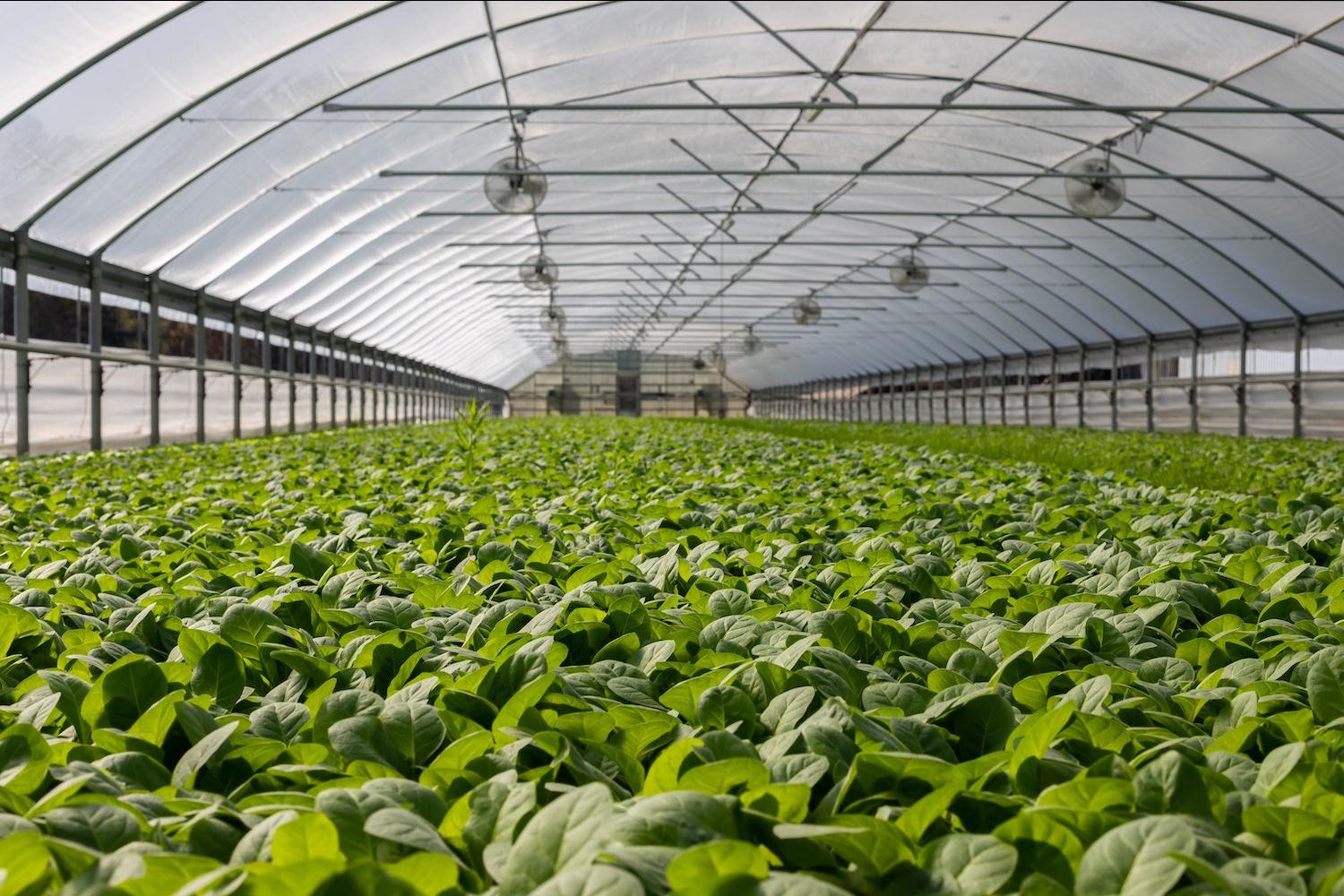
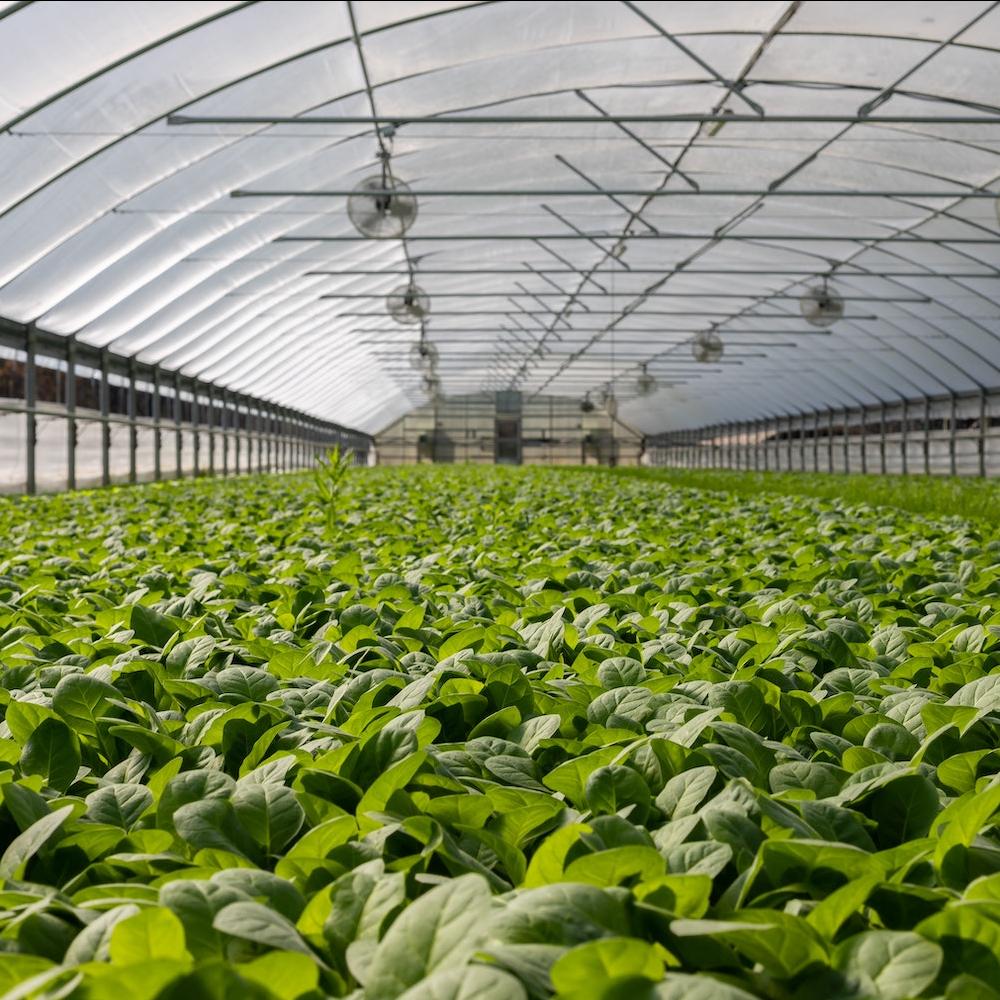
The pandemic, the war in Ukraine, climate change, and the cost-of-living crisis drove food insecurity to unprecedented heights in the U.S. and worldwide. In Texas alone, 1 in 8 people — including almost 1.4 million children — face hunger, according to Feeding America.
In December, the Texas Department of Agriculture submitted a report to the state legislature outlining the factors contributing to food insecurity. It pointed to the climate crisis as the main culprit, with stagnant wages, rising cost of living, and lack of food access in rural areas among other key factors.
The agency recommended several policy changes including delivery options for SNAP (food stamp) benefits used to purchase healthy foods and boosting the state’s farm-to-school program, which incorporates locally-grown produce in school meals and provides nutrition education to K-12 students.
The report also suggests raising the minimum wage. To meet the basic needs of a two-parent, one-child household in Texas, both parents must earn an hourly wage of $17.44 working 40 hours per week. The minimum wage in Texas is only $7.25 per hour.
As the state considers policy changes, agricultural output remains a problem. The agricultural industry in Texas was slammed by extreme droughts and floods over recent years.
Partners look to improve food security in Texas through indoor farming
A new coalition of private- and public-sector organizations plans to bring relief to the state by accelerating agricultural innovations that address barriers to food security. This partnership between Intel, SVG Ventures' Thrive initiative, and Texas A&M’s AgriLife Extension Service seeks to advance hydroponics, vertical farming, aquaponics, and other controlled environment agriculture (CEA) innovations.
SVG Ventures’ Thrive, an agrifood investment platform, brings corporate partners to the table. The Texas A&M University program provides agricultural expertise and outreach to producers. And Intel backs the project with technology development resources.
"It has become increasingly clear that traditional agriculture will be challenged to meet the food demands of the future," John Hartnett, CEO and founder of SVG Ventures’ Thrive initiative, said in a statement. "We are delighted to partner with Intel and Texas A&M to accelerate CEA innovations to drive improvement in food and nutrition security."
CEA, also known as indoor farming, involves growing crops in an environment largely separate from nature. The separation makes agricultural output less dependent on favorable weather patterns, which becomes more important as the climate crisis makes weather more extreme. Growing indoors also allows for decreased pesticide use and nutrient recycling that ensures fertilizers are not leached into local waterways.
There is great potential for CEA to create sustainable food systems that improve food security, but it uses large amounts of electricity. It can be more fossil fuel intensive than traditional agriculture if there is not enough clean energy available to use.
The bottom line: Indoor farming offers real potential, but more work is needed
Though questions about the environmental sustainability of CEA systems remain, indoor farming has food security benefits. The new coalition is mapping the innovation landscape of Texas’ food system, identifying both challenges and opportunities, in order to scale their work and address nutritional needs in the state.
By utilizing the technology, outreach, and financial resources of the coalition, the group is working to create a local food system that feeds Texans and can scale across regions.
Image credit: Mark Stebnicki/Pexels
Anti-Woke, Who?: Employees and Customers Want to See Companies Speak Out


Demonstrators gather in Denver in 2022 to protest restrictive abortion policies and rising gun violence in the U.S.
Given rising political pushback against environmental, social and governance (ESG) policies in business, many corporate leaders are staying mum about their non-financial programming. But research indicates such a strategy hardly sets companies up for success.
Seven in 10 U.S. employees agree that companies should respond to seemingly divisive social issues like gun violence, abortion access and climate change, according to recent polling from BSR and Morning Consult. Related research from IBM found that companies with strong ESG performance tend to be more profitable as U.S. consumers continue to seek out sustainability.
Let's take a closer look at what the data tells us — and why brands should rediscover their voice on the major issues of the day.
We're not as divided as we might think
The "anti-woke" rhetoric from politicians and pundits makes the U.S. public seem more divided than ever, but research indicates we agree on more than we might think.
At least three-quarters of Americans say it is important for their state to have social policies that address gun violence (82 percent), voting rights (78 percent), and paid family and medical leave (78 percent), according to BSR's survey. And even as right-leaning state governments adopt more restrictive policies, more than half of U.S. adults feel it's important for their state to safeguard abortion access and LGBTQ rights.
"We need to debunk the narrative that these are highly divisive issues across the country,” Jen Stark, co-director of BSR’s Center for Business and Social Justice, said in a statement announcing the research. “Many have significant majority support from people across America, a fact that can get lost in the way these issues are typically covered in the media."
Importantly, people are looking to their employers to get involved. By a 4:1 margin, U.S. employees say they want to be a part of a business that promotes social justice internally through workplace policies, according to BSR. They also prefer employers that take action outside of their own walls: Only 9 percent of employees said they would be less inclined to work for a company that invests in and advocates for social justice causes, while five times as many said they'd be more likely to seek employment at a company that does this.
"Business can and should find courage to take action on these issues which are important for and aligned with the views of their workers and customers," Stark said. "These issues are material, and how a company responds can impact their reputation.”
People are scared, and they're looking for companies to lend their voice and help
In particular, two-thirds of employees agree that companies should respond to gun violence and climate change, as these issues become increasingly top-of-mind for Americans.
In another tragic month of senseless gun violence — including two young people shot for mistakenly approaching the wrong houses and a mass shooting at a 16th birthday party over the weekend — a shocking report from the Kaiser Family Foundation sheds light on just how much Americans are affected.
One in five Americans have been personally threatened with a gun, according to KFF's research, and nearly as many have lost a family member to gun violence or seen someone get shot. As Susan McPherson observed in last week's edition of her McPherson Memo newsletter, "Gun violence and the mayhem it causes are now a constant and terrifying symbol of our society."
Meanwhile threats of climate change are causing more and more anxiety among the public: Over two-thirds (67 percent) of Americans are concerned about increasingly harsh living conditions due to climate change, with 1 out of 4 worried they may have to give up long-term goals like starting a family, according to January polling.
As people grow more concerned about issues like gun violence, climate change, abortion access and LGBTQ rights, many U.S. state governments are moving in the opposite direction — enacting laws that loosen gun restrictions, clamp down on reproductive and LGBTQ rights, and lock in decades more emissions from fossil fuels. Against this backdrop, companies are challenged not to back down from "anti-woke" crusaders at the state level, but to step up and influence policies in a way that aligns with what their employees and customers want to see.
"Increasingly, companies are navigating a new reality where they are expected to help shape state policy by taking action on issues that affect the health, well-being, and safety of workers and their families," said Stark of BSR.
Customers are looking for real ESG leadership
"While the conversation has become controversial, with pundits pitting the ethics of environmental, social, and governance (ESG) initiatives against their economic costs, the data tells a different story," the IBM Institute for Business Value concluded in another report released this week.
IBM's report is the latest to connect ESG performance directly to the bottom line, following similar conclusions from the consulting firm Center for Sustainability and Excellence and the research technology company Glow earlier this year. IBM's research in particular found that companies leading on ESG performance are also 43 percent more likely to outperform on profitability. Leaders at these companies are 52 percent more likely to say ESG efforts have a "huge impact" on profits.
"The key is to see ESG as a transparency enabler," IBM found in the report. "When viewed as a vehicle for driving business value — rather than a narrow reporting exercise — ESG generates insights that create opportunities and boost performance."
As consumers seek out more sustainable brands, they're also less likely to accept company claims at face value: Only 20 percent of consumers say they trust the statements companies make about environmental sustainability, down from half just two years ago — increasing the urgency for companies to ensure they're walking the walk.
IBM found that lack of consistent and actionable data hampers corporate progress on key ESG goals, a challenge cited by other business leaders over recent years. This follows the familiar edict "you can't manage what you don't measure," but when it comes to stepping up and speaking out, the data is clearly already there.
Indeed in years past we've seen companies leverage their voices to shape real progress. And even as we seem to be going backward, those same corporate voices hold the power to turn the tide.
Image credit: Jack Prommel/Unsplash
New Federal Climate Laws Are Bringing U.S. Manufacturing Back
U.S. President Joe Biden arrives at the Wolfspeed semiconductor manufacturing plant in Durham, North Carolina, for the kickoff of his “Investing in America” tour last month. (Image credit: Official White House Photo by Adam Schultz)
The Joe Biden administration fought tooth and nail to pass new laws that transform the carbon-heavy U.S. economy into a climate action hero. The results are beginning to show. Both the Inflation Reduction Act and the CHIPS and Science Act provide federal tax credits for manufacturers to onshore their operations in the U.S. Red states are benefitting from the renewed U.S. manufacturing boom as well as blue states, further undercutting the anti-ESG movement promoted by high-profile Republican office holders.
U.S. drops the ball on climate action
Ironically, the U.S. sparked the solar technology revolution back in the 1950s when the National Aeronautics and Space Administration (NASA) was searching for energy to power operations in orbit. The U.S. continued to dominate the global solar industry for decades.
Unfortunately, by the time former President Barack Obama took office in 2009, overseas manufacturers had caught up and raced ahead. In addition, the mainstream market for renewable energy was only beginning to take shape. The overall, installed (aka levelized) cost of solar panels and wind turbines remained high relative to fossil energy during President Obama’s time in office. Blowback against his Clean Power Plan and ongoing competition from overseas manufacturers provided two additional obstacles.
The clean power manufacturing situation worsened under former President Donald Trump. He took office as a strong supporter of fossil energy and pulled the U.S. out of the 2015 Paris Agreement on climate change. Though he talked a big game about bringing back U.S. manufacturing jobs, he disengaged with the job-creating, global decarbonization movement. His U.S. manufacturing policy was failing long before the COVID-19 pandemic struck in March of 2020.
The Biden administration picks up the ball and runs with it, spurring billions in U.S. manufacturing commitments
The new Biden-supported legislation provide a sharp contrast in both policy and circumstances. In addition to substantial tax breaks, the Biden administration is benefitting from the continuation of Obama-era initiatives that fostered a drop in the cost of renewable energy hardware while addressing obstacles in the “soft” area of costs related to inspections, permits, marketing and other administrative areas. Leading U.S. corporations also continued to raise the demand for renewable energy by leveraging their buying power throughout the Trump administration.
The results have been striking. On Jan. 11, for example, the South Korean Firm Hanwha Solutions Corp. announced a $2.5 billion plan to construct a solar manufacturing campus in Georgia. The soup-to-nuts campus will include facilities to manufacture solar ingots, wafers, cells and modules.
That’s just one example. Last week, the Financial Times credited the Biden administration with attracting new corporate manufacturing commitments totaling more than $200 billion since the Infrastructure and CHIPS bills passed last year. “The investment in semiconductor and clean tech investments is almost double the commitments made in the same sectors in the whole of 2021, and nearly 20 times the amount in 2019,” reported Amanda Chu and Oliver Roeder of the Financial Times, citing data the paper compiled on U.S. manufacturing deals.
“While the FT identified four projects worth at least $1 billion each in these sectors in 2019, there were 31 of that size after August 2022,” they added. The Financial Times also took note of 75 other new clean tech manufacturing projects in the U.S. of $100 million or more.
Who’s afraid of the ESG?
Chu and Roeder of the Times concluded by observing that additional guidance on the tax credits is forthcoming from the Biden administration, leading to the announcement of even more projects in the near future.
Red states are already jostling with blue states for a share of the action, regardless of state-level Republican officials who have been railing against "woke" capitalism and ESG (environmental, social and governance) factors being used in investing. The anti-ESG movement purports to protect public pension funds, but it is nothing more than a thinly disguised effort to protect fossil energy stakeholders.
Georgia is a case in point. The Republican-led state never enacted a renewable energy portfolio standard or even set voluntary renewable energy targets. It has lagged behind other states in terms of increasing access to renewable energy within its borders. However, Georgia policymakers seem to have no problem with enticing clean energy industries to set up shop in the Peach State.
Hanwha company Qcells opened its first solar panel factory in Dalton, Georgia, in 2019. That put the state on the map as host to the largest factory of its kind in the Western Hemisphere, and Republican Gov. Brian Kemp has been effusive in his praise for the company’s decision to add another $2.5 billion to the state’s economy.
“Qcells will build a new facility in Cartersville and add a third facility to its Dalton location, creating more than 2,500 new jobs in northwest Georgia. These investments are expected to bring Qcells' total solar panel production capacity in Georgia to 8.4 gigawatts by 2024,” the governor’s office reported in January.
"With a focus on innovation and technology, Georgia continues to set itself apart as the No. 1 state for business,” Gov. Kemp stated. “Georgia provides a business-friendly environment that means jobs for hardworking Georgians in every corner of the state and success for both existing and new companies. We're excited for Qcells' continued success in the Peach State."
Those “business-friendly” words are at odds with Kemp’s support for anti-LGBTQ legislation, but the point has been made. Georgia and other red states don’t care if their new Biden-enabled, home-grown industries export technologies that shrink the fossil energy profile of the US. Regardless of their political posturing, they just want the jobs.